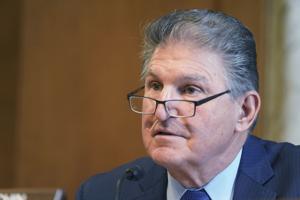Op-Ed: Congress must steer clear of infrastructure boondoggles

The $1.9 trillion COVID relief package will soon be in Congress’ rearview mirror, but that doesn’t mean that the federal government is on the road to fiscal solvency. The opposite is in fact true as the country accumulates more than $28 trillion in debt and lurches closer to a fiscal crisis.
It has been reported that lawmakers will next be crafting and passing a massive infrastructure package that may be even larger than the stimulus bill. According to a recently published Goldman Sachs research note, the infrastructure bill may cost an astounding $2 trillion – or possibly even double that – over a ten-year period. Even the “low” range estimate would cost each household more than $15,000, or the price of a new car. And the cost will only go up from there as lawmakers propose including items completely unrelated to infrastructure. Taxpayers deserve a focused, targeted infrastructure bill, not a special interest bonanza.
While there are few concrete suggestions for what will be in this second major spending package of 2021, reports suggest that this “infrastructure” bill will go far beyond traditional transportation spending. On February 17, The Washington Post reported that the bill will tackle “other priorities such as clean energy, domestic manufacturing, and child and elder care.” This lack of focus “is already threatening to divide Democrats who have largely united behind the coronavirus relief bill,” since critical players such as Sen. Joe Manchin (D-W.V.) are insisting that new spending be paid for via tax increases. Should the infrastructure bill become a smorgasbord of pet projects, though, it will be difficult for even the Democrats to come up with a list of tax increases that won’t spectacularly backfire on them…and the economy.
One proposal is to pay for this expansive spending with corporate tax hikes. Raising the corporate tax rate would result in higher prices for consumers and lower wages for workers at the worst possible time. According to extensive modelling conducted by the Tax Foundation, raising the corporate tax rate to 28 percent would destroy 187,000 jobs and axe wages by nearly 1 percent. And, 2019 research from University of Chicago, Northwestern University, and City University of Hong Kong scholars reveals that more than a third of the corporate tax burden falls on consumers. According to their estimates, “A one percent increase in the corporate tax rate leads to an increase in retail product prices of approximately 0.24 percent.” Raising rates would send a painfully confused message from Democrats keen on discussing issues such as stagnant wages and struggling households.
And for all of the problems brought on by these new tax-and-spend policies, proposed additions to the infrastructure bill would do little to help American businesses and households. Already-subsidized industries such as solar are seeing increased growth and decreased prices, even as tax credits begin to phase out. Throwing more taxpayer dollars at these well-capitalized industries would amount to an ineffective, Robin Hood-in-reverse policy that punishes the poorest Americans. Meanwhile, the domestic manufacturing sector is experiencing pre-pandemic growth levels as consumer spending increases and restrictions are loosened. It makes little sense to subsidize these companies (in an “infrastructure” bill no less) while clawing back these gains via corporate tax hikes.
It’s a shame that Congress is so eager to waste taxpayer dollars when there are plenty of real, pressing infrastructure issues to address. States from Alaska to Maine are forced to make do with crumbling roads and bridges. And, the infrastructure dollars they do get from Washington, D.C. are accompanied by difficult-to-follow conditions. For a fraction of the slated cost of the infrastructure bill, lawmakers can allocate transportation funds to the states and localities that need them the most – without a slew of mandates. State and local officials can explore innovative ways to stretch these dollars further, such as partnering with the private sector on infrastructure projects. This lean federalist approach is surely better than the broken status-quo of trillion-dollar federal deficits. Lawmakers can and must steer clear of boondoggles and runaway spending.
Disclaimer: This content is distributed by The Center Square
